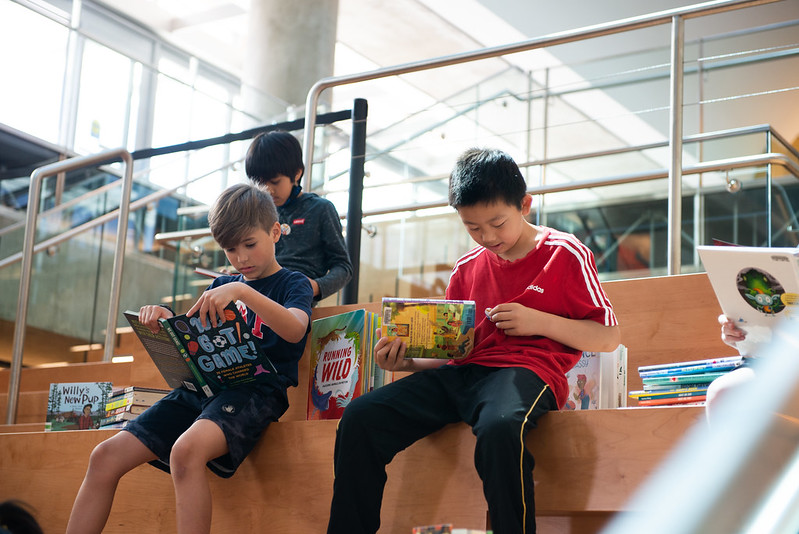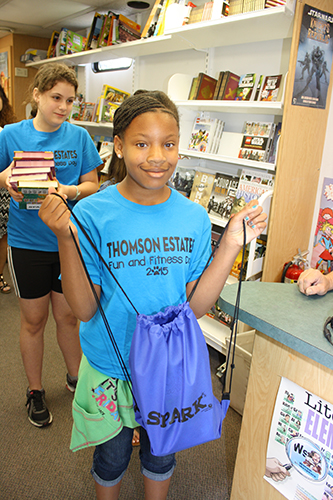Reading in the balance: Exploring the role of public library in the ‘science of reading’

CC BY-NC-ND 2.0 Deed
Learning to read is neither an innate nor simple process, and recently there has been increased scrutiny on whether schools are effectively preparing children to learn to read. Colloquially referred to as “the reading wars,” this scrutiny has led to the development of a reading-instruction approach based on some research-based theories and principles that are collectively referred to as the ‘science of reading.’ This curricular approach, already implemented in 37 states, has resulted in a remapping of reading instruction and teacher training. So, what does this mean for public libraries and your efforts to support the families in your communities?
Public libraries have long provided families with access to the information and materials they both need and want, with the goal of building a lifelong love of reading. You may have noticed that, in the last few years, parents and caregivers in your communities are seeking information about the science of reading. Perhaps they have questions about what this approach means for their child. And they want to find books and media that fit within this approach to support their children on their reading journey. If you have built strong relationships with the families in your community, they can bring their questions to you. This is why it is a good idea for you to be aware of and understand these literacy-related trends and topics so that you can support these families from an informed perspective.
What does the science of reading refer to?
The International Literacy Association defines the science of reading as “A convergence of accumulated and evolving findings from research regarding reading processes and reading instruction (pedagogy) and how the two are implemented across contexts that interactively bridge cultural, social, biological, psychological, linguistic, and historical bases of learning.” The science of reading asserts that pairing language comprehension—decoding words by sounding them out (phonics)—with word recognition—sometimes called whole language—can be helpful for students learning to read. Library Journal points out that “Effective literacy instruction therefore supports children understanding the connection between the sounds of spoken language and written language as well as immersive experiences with quality texts.” There are dozens of sources you can explore to continue to learn more about this topic. Here are a few to get you started:
- The Reading League, “Science of reading: Defining guide”
- Reading Rockets article, “Introduction to the science of reading”
- Article from Scholastic Inc, “What the science of reading says about our brains”
- edWeb.net webinars, especially during Science of Reading Week March 25-28, 2024
- The Ohio Library Council offers science of reading resources for libraries
- Academic articles that critique and explore the science of reading
- "Critical issues in the science of reading: Striving for a wide-angle view in research"
- "Stories grounded in decades of research: What we truly know about the teaching of reading"
- "The science of reading: Supports, critiques, and questions"
- School Library Journal article “Love it or hate it, the Science of Reading gains traction in schools”
- Association for Library Service to Children (ALSC) resources
- Blog post by the Early & Family Literacy Committee, “Every Child Ready to Read and the science of reading”
- Blog post by Dr. Tess Prendergast, “The science of reading: A primer for children’s library staff”
- Learning to Read at School, Loving to Read at the Library, Colorado State Library webinar recording with Jess Hesselberg
- #PLA2024 The Science of Reading, ALSC blog summary of PLA preconference session, Public Libraries and Schools: Everything You Need to Know about the Science of Reading

and Achieve with Reading Kits), courtesy Cecil
County Public Library
It’s also important to note that the pressure on teachers is higher than ever, with widespread implementation of the science of reading approach in classrooms across the country. Your library can help to support teachers by deepening your understanding of reading instruction and the science of reading, and providing reading materials for children and families that, again, balance reading support with reading interest.
Finally, diverse texts play a crucial role in your efforts as a public librarian. Because you are not bound by a curriculum, you can incorporate culturally responsive and representational texts in your reader’s advisory and collection management. Students of color and English language learners can and are benefitting from science of reading approaches in schools and will be well served by your attention to the inclusiveness and diversity of the library’s collections.
How to guide families
Remember, you don’t have to become a reading teacher. The best part of the public library experience for children and families is that there are no curricular expectations nor academic standards. Children can come in and read anything they want, based solely on what they are interested in. And you can help them find those materials and also guide the families you interact with, to provide balance with what is being communicated at school around reading approaches.
There are several resources for you to develop ways to support the families in your community by providing relevant and meaningful information and materials to help them no matter where their children are in their reading journeys. A School Library Journal article on ending the reading wars provides personal insight into the need for a balanced approach to literacy instruction and offers “Eight tips for educators” intended to support librarians as they, in turn, support and guide families and emerging readers. These tips include focusing on making the library welcoming and encouraging for all readers; supporting children as they make their own choices of what to read; providing diverse and representative collections; and sharing your own reading experiences with children, as well as light ways to infuse some literacy instruction into your interactions with young readers.
Recommendations for libraries
The Research Committee of ALSC (Association for Library Service to Children) has crafted an annotated bibliography of resources related to the science of reading that will be shared via ALSC blog posts later this spring. Drawn from that bibliography, here are some recommendations for librarians:
- Look for and read a variety of opinions and approaches to literacy instruction. Reach out to teachers at nearby schools to learn more and understand what is taking place in their classrooms related to the science of reading. This will help you guide families and curate your collection to meet these community needs and priorities.
- Engage in conversations with the families who come into your library to understand what they are looking for; look for how your reader’s advisory and reference skills can be useful to provide both relevant and interesting reading materials. In this way, you can balance meeting educational needs with building a love of reading.
- Look for partners who can help you with this work, such as early childhood learning centers and elementary schools, with whom you can build resources and recommendations for your community. You might even consider creating a booklist for families that helps them identify specific titles for their children.
- Share strategies with families for how to support reading development in their everyday lives. Encourage them to point out environmental print—signs, posters, banners that appear in their communities and offer opportunities to practice letter recognition. Incorporate songs and music into daily routines such as bathtime and meals to build an understanding of the sounds of words and syllables. There are lots of small activities that can contribute to helping children be ready to learn to read, even at an early age.
Libraries remain a great place to foster literacy development and help community members stay informed about the newest trends and topics in reading science. By starting with the resources shared here, you can be prepared to support families of emerging readers and continue the important work of promoting literacy in your community.
Thank you to the members of the 2022-2024 ALSC Research Committee for contributions to this article: Alexandra Bell, Dr. Kathleen Campana, Dr. Grace Enriquez, Tanya M. DiMaggio, Lissette Gonzalez, Dr. Miriam Martinez, Dr. J. Elizabeth Mills, Kaitlin A. Rotella, Tricia Wehrenberg.
